- Home >
- Past Institutes >
- Home >
- Student and Teacher Projects
Students and teachers in the 2019 Joint Science and Technology Institute took part in research projects in a variety of scientific disciplines.
High School Student Projects
Environmental Water Quality
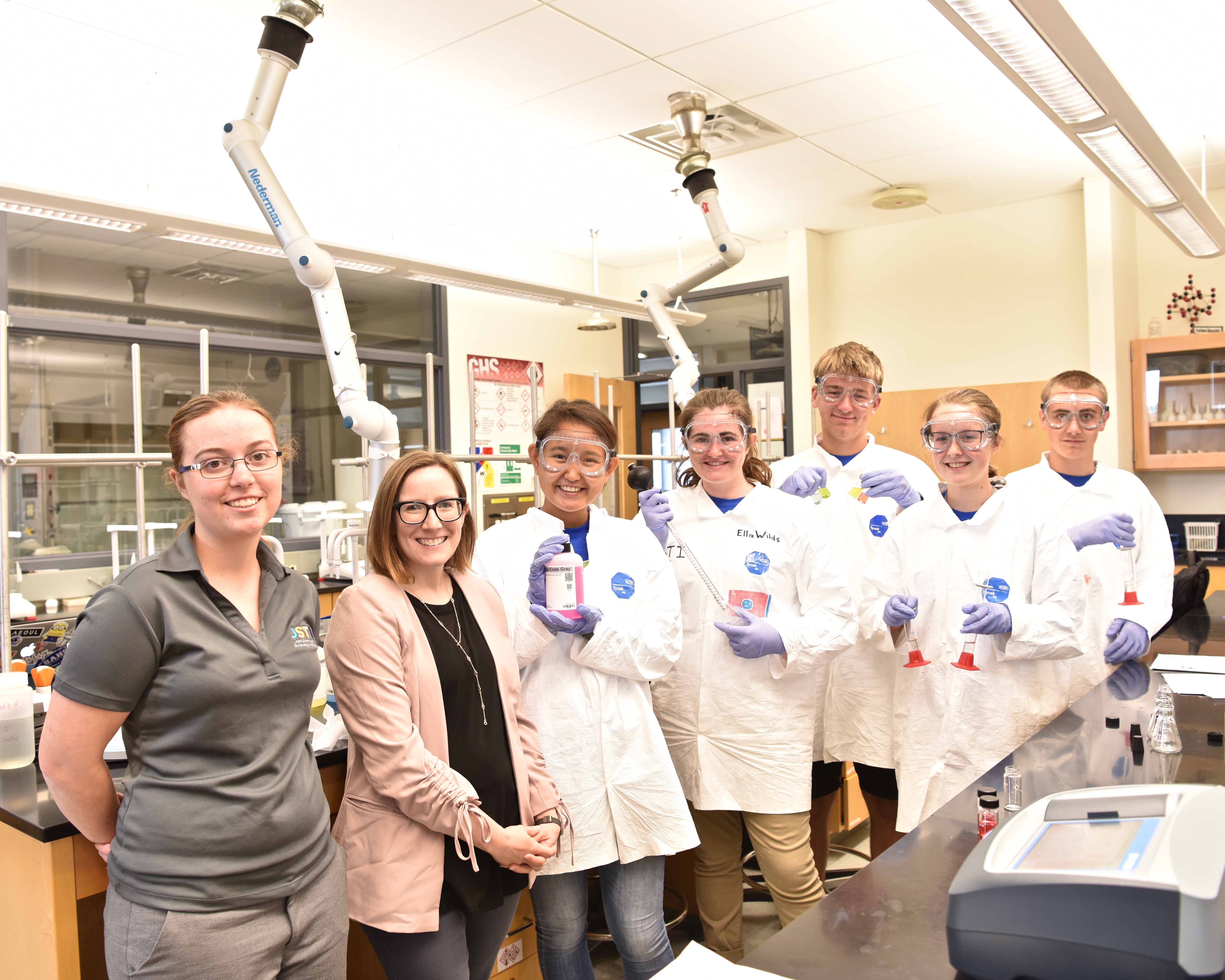
The Chesapeake Bay watershed includes the states of Pennsylvania, Maryland, Delaware and Virginia, as well as the District of Columbia. Runoff from land, storm water, and wastewater treatment plants contribute to the water in the stream and rivers which flow into the bay impacting the ecosystems found there. Too much of any pollutants from the various water sources can have a negative effect on the bay, causing the depletion of necessary oxygen and the death of the fish and the overall life in the bay. Students will collect water samples from several locations in the Chesapeake Watershed and analyze them for nitrate, ammonia, phosphate, and bacteria. Based on the measurements, students will be able to piece together how human and natural activity can impact the Bay’s ecosystem.
Rapid Prototyping & Military Packaging
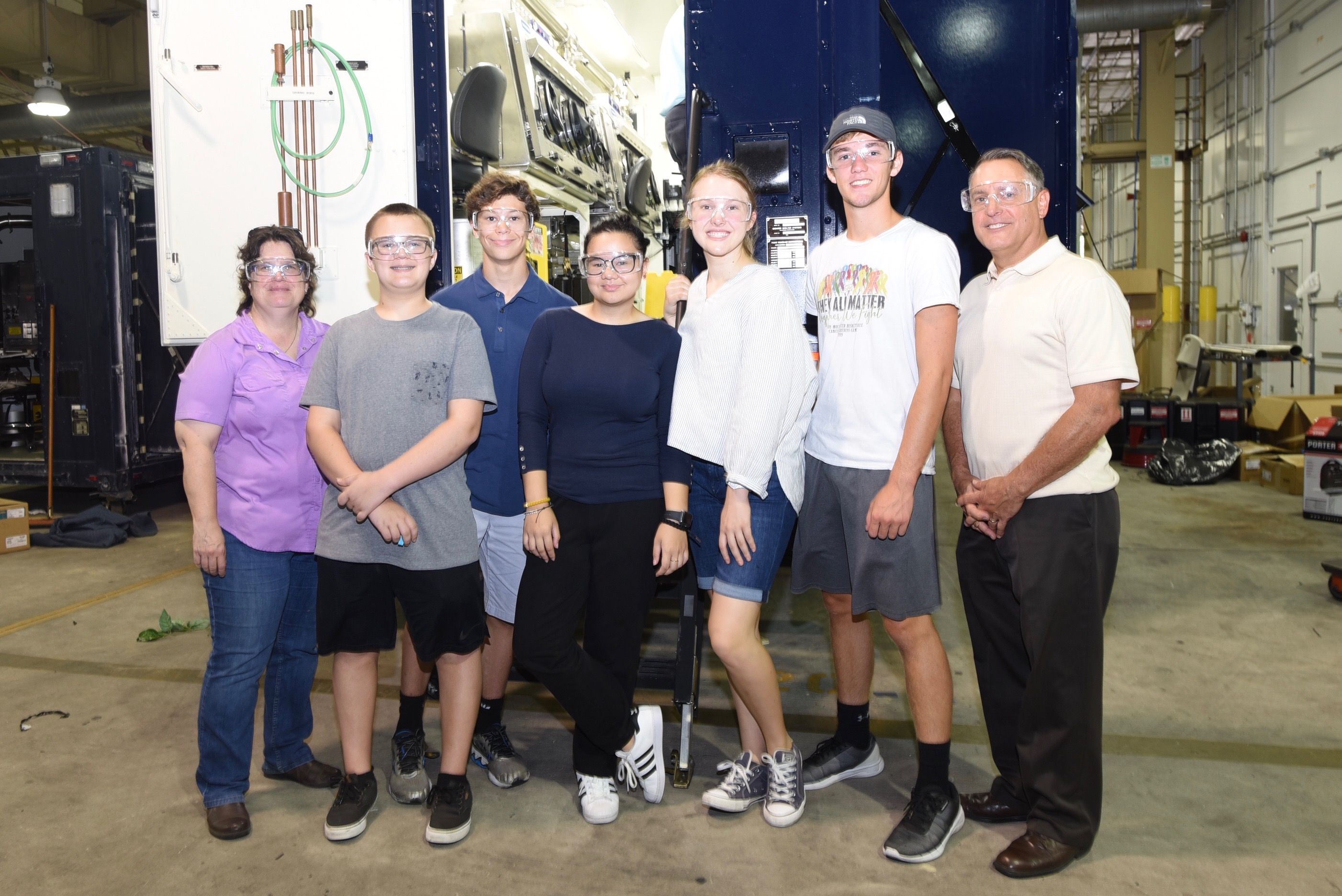
Students will design, build and test unique items and their packaging against the rugged military environment. Working with engineers and specialists from Advance Design & Manufacturing, the students will use SolidWorks, 3D printing, and other rapid prototyping technologies to analyze, model and build Widgets. Students will select from military specification packaging materials to protect their Widgets, and test both prototypes and packaging against the extreme conditions encountered by military material.
Mathematics and Modeling Mania
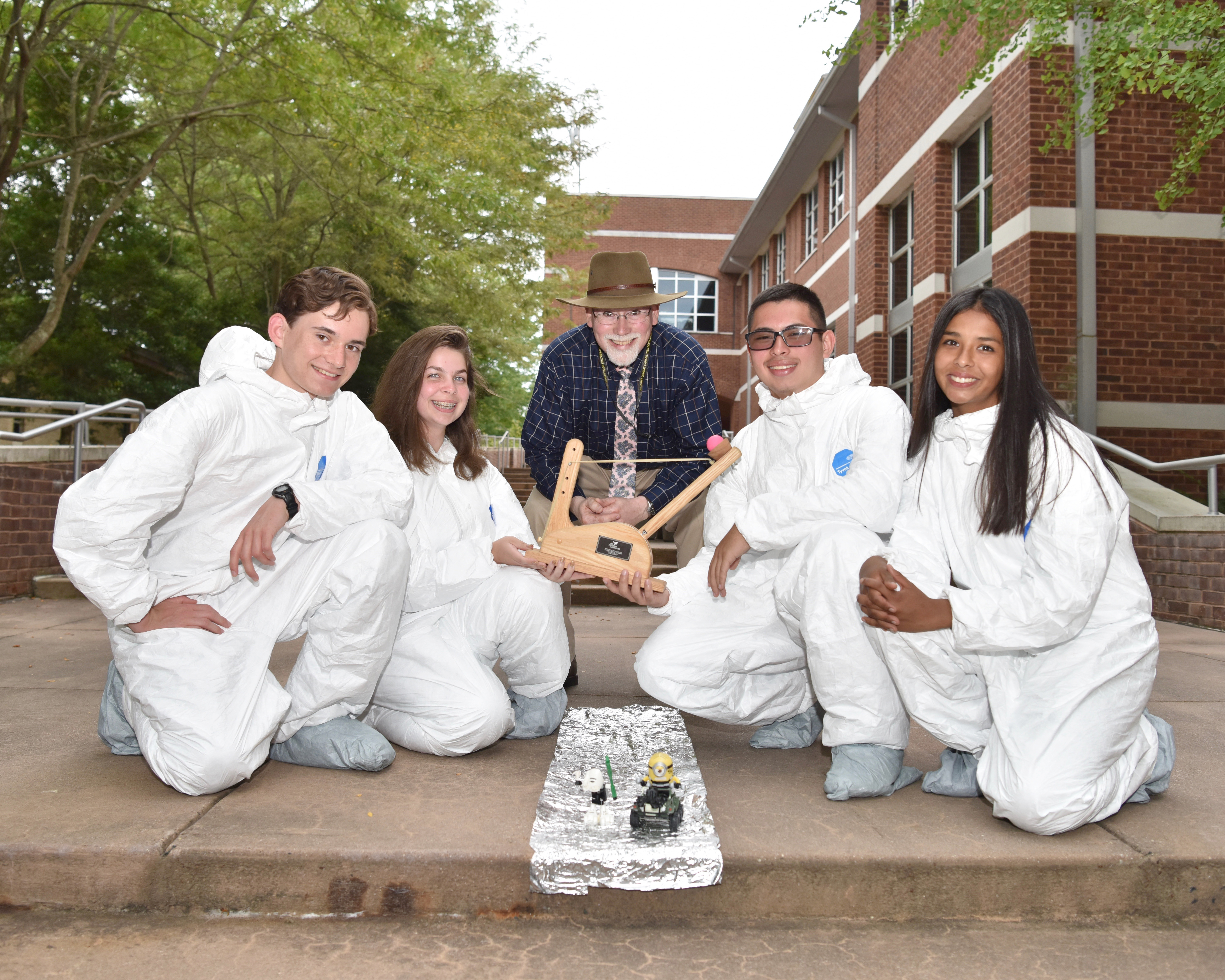
Students will be introduced to the statistics and math modeling used by Operations Research (OR) analysts for a variety of tasks. Starting with the basics of probability, statistics and the modeling of a physical system, we will then move into some hands-on experiments with statapults (catapult). This provides a physical setting for students to apply statistics and design of experiments--important components in generating and analyzing data for model development. Students will conduct toxicology modeling, and a simplified model for disease propagation as a simulation to demonstrate how various pathogen parameters and countermeasures impact the worldwide spread of a contagion. Students will be given a primer on how several real-world diseases behave then given the option to enhance their pathogen of choice to more fully infect the world in the simulation. The second phase of this project will introduce the math and science behind coordinate systems, navigation (including GPS), meteorology, and simplified atmospheric transport and dispersion of pollutants/hazards. We will then use the Hazard Prediction and Assessment Capability (HPAC) simulation from the Defense Threat Reduction Agency (DTRA) to examine what might happen from various kinds of chemical, biological, radiological, and nuclear (CBRN) releases at locations near and dear to the students. Rounding out their experience will be some introductions to various methods for individual protection from CBRN hazards, computing hardware, and binary math.
Expanded Robotics
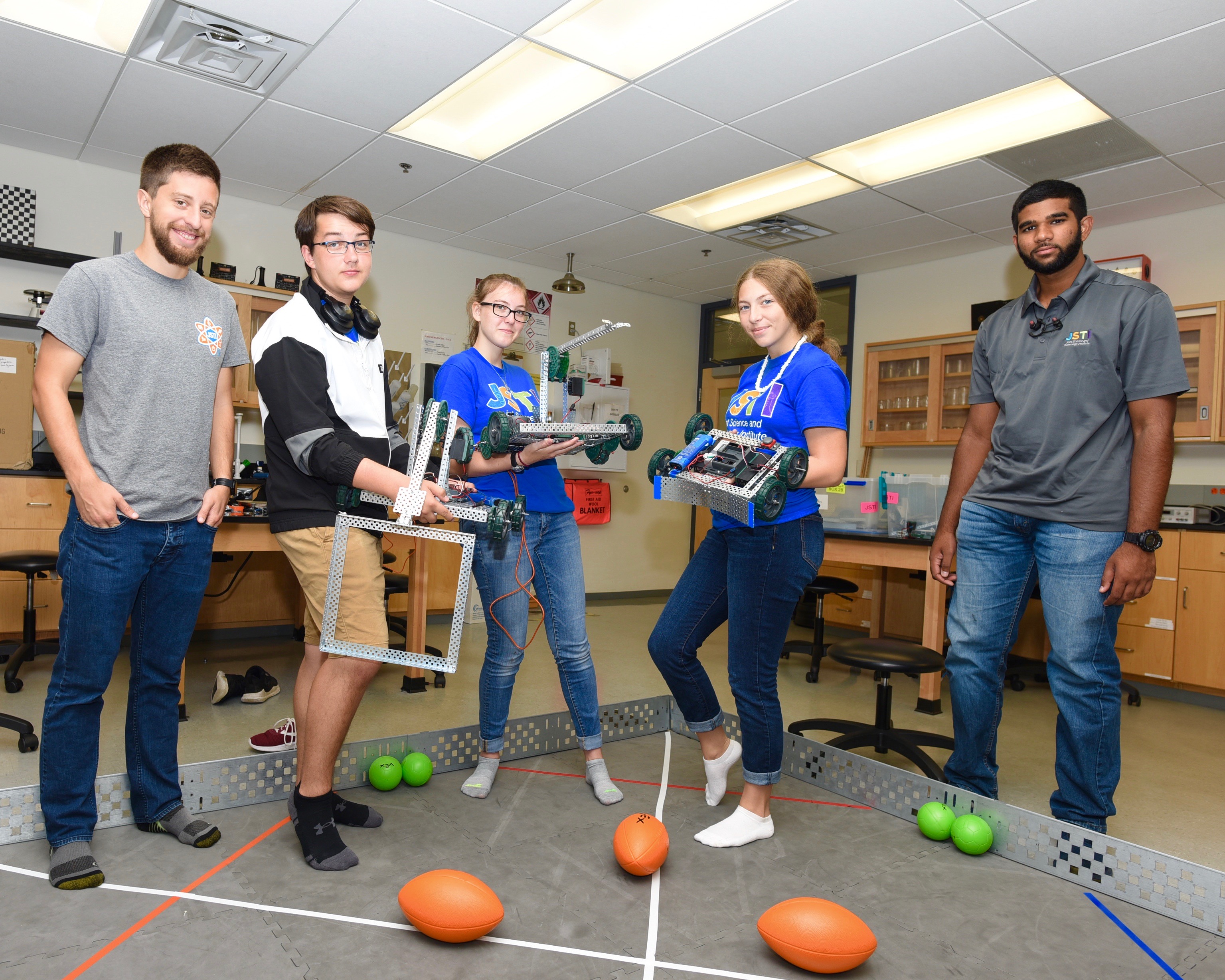
The field of robotics is growing by leaps and bounds, from movie props to performing delicate surgeries. As an introduction to robotics, students will explore the gambit of emerging trends and future applications in the industry including traditional uses like welding and high speed sortation through to drones and humanoids. Students will then get hands-on experience by designing, building, and programming robots to score points in a competition. Basic engineering principles from mechanical design and assembly to algorithms and coding will be introduced. Career options and basic technical skills will also be covered.
3-D Design and Printing
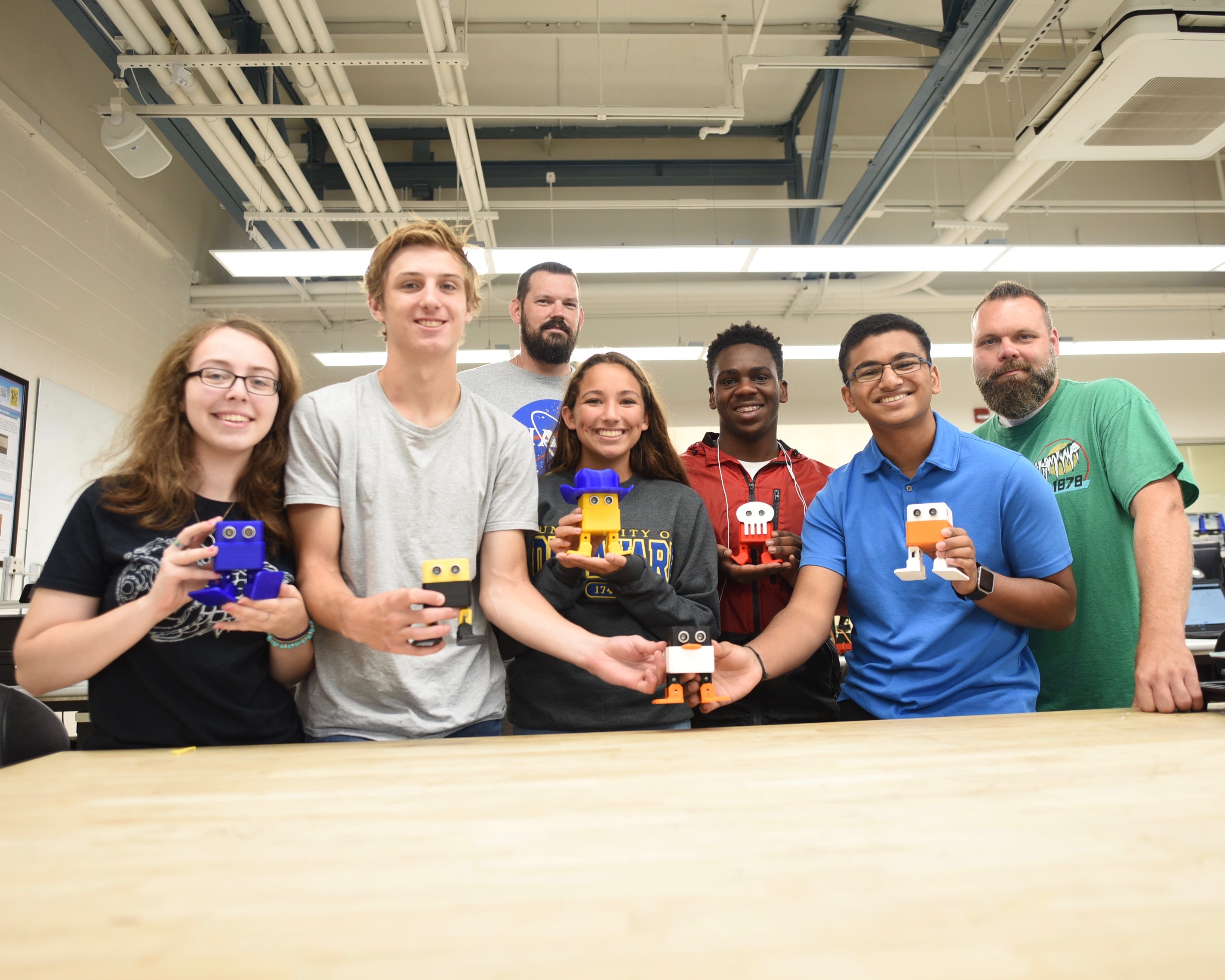
The JSTI project will have two main objectives. 1. Students will build a robot from a kit, and utilize a 3D printer for optimal fabrication, and 2. use this printer and a variety of other 3D printers to fabricate functional robots. Other functional devices may be investigated. Through this process, students will learn, utilize, and combine skills in 3D design and fabrication, electronic circuitry, and computer programming.
Microbiome-Based Antibiotic Discovery
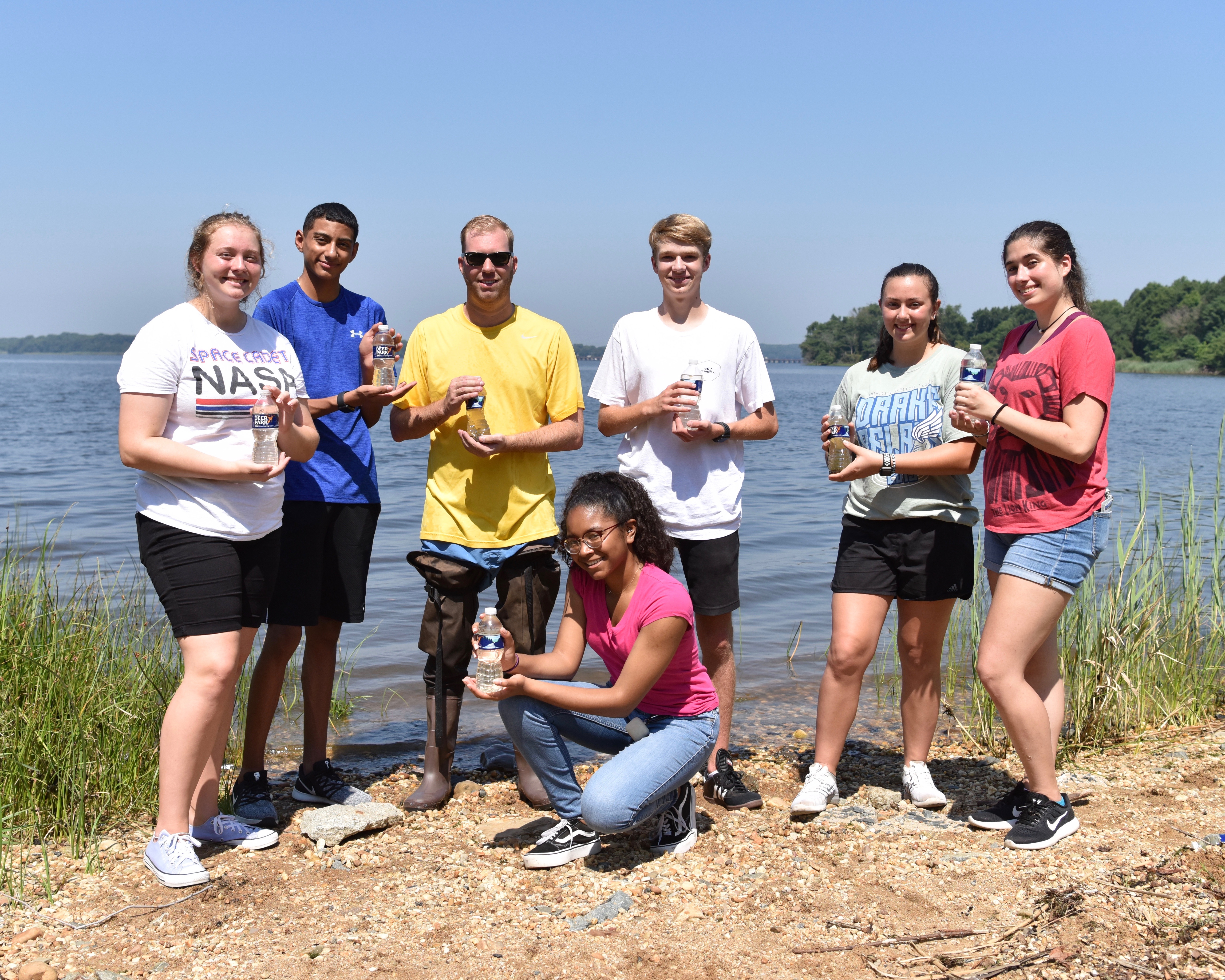
Nature has proven to be the best source of antimicrobials, accounting for more than 75% of antibiotics, beginning with penicillin 90 years ago. Microbes produce compounds for a variety of purposes which can be utilized as therapeutic agents such as antimicrobials. Combining the power of metagenomics and an engineered bacterium, one can harness novel chemistry for antimicrobial discovery. These antimicrobials can then be used to protect the Warfighter and the public from biowarfare agents and the growing “Super Bug” crisis.
For this project, students will expand an environmental DNA (eDNA) library which is currently being used for antimicrobial discovery. They will collect samples and data from a local river site and other sources containing a large diversity of microbes. Long eDNA capable of antimicrobial biosynthesis will be extracted and purified from the water sources. The eDNA library created by the students will later be inserted into a specialized DNA-cloning vector. This DNA will then be inserted into an engineered bacterium by electroporation and the number of clones in each student’s library will be assessed and stored cryogenically. These libraries will directly contribute to ongoing antibiotic discovery efforts for the Warfighter.
Videography
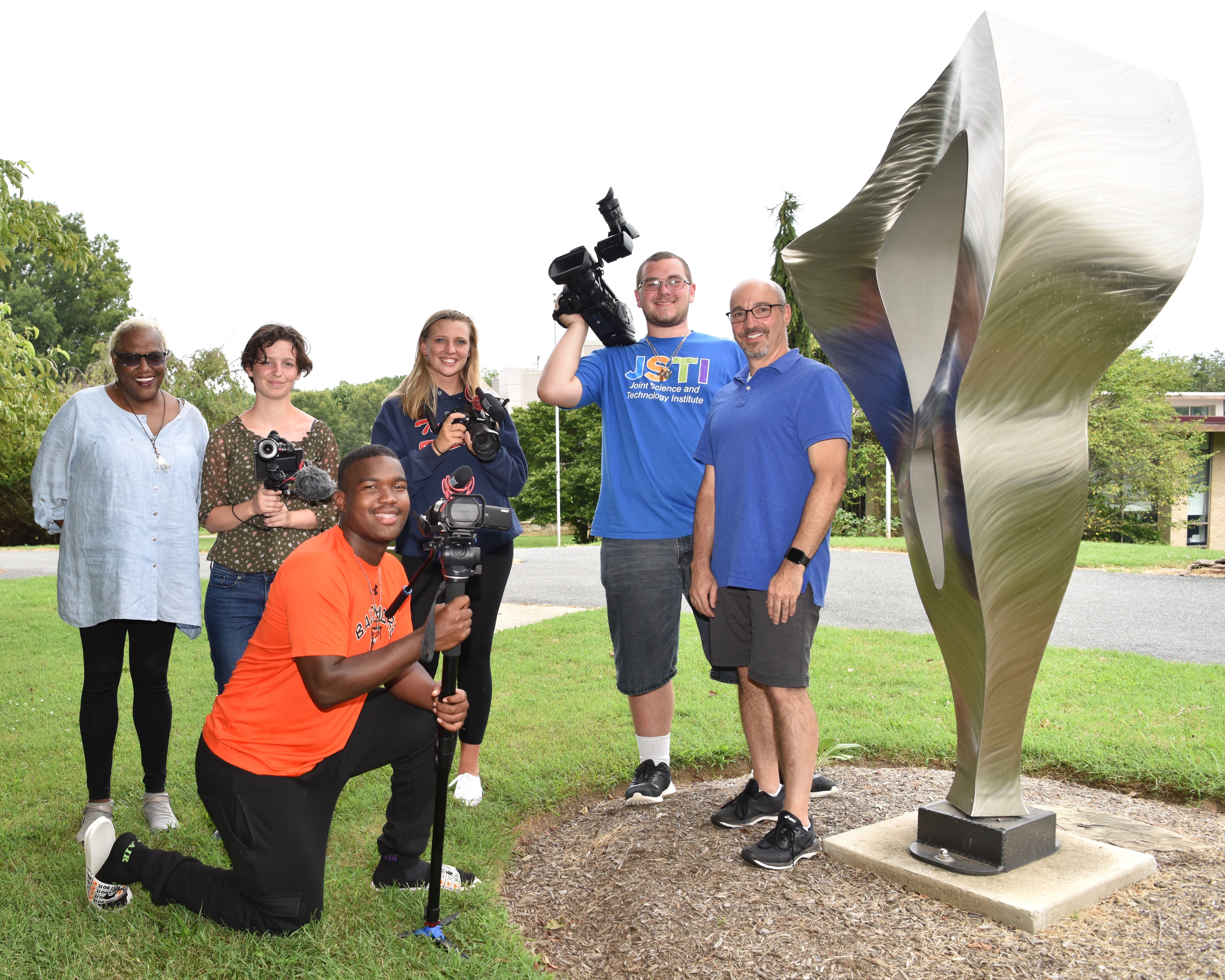
The purpose and functions of videography are to inspire, create and provide ideas, and model how storytelling can be an impactful tool and resource to help showcase what learning looks like. There is a powerful connection between stories, the emotions they convey, and how storytellers leverage a variety of media for effective communication today. We will also look at the technology of video and how far the medium has developed from Marconi to Speilberg.
Advanced Mechanical Prototyping
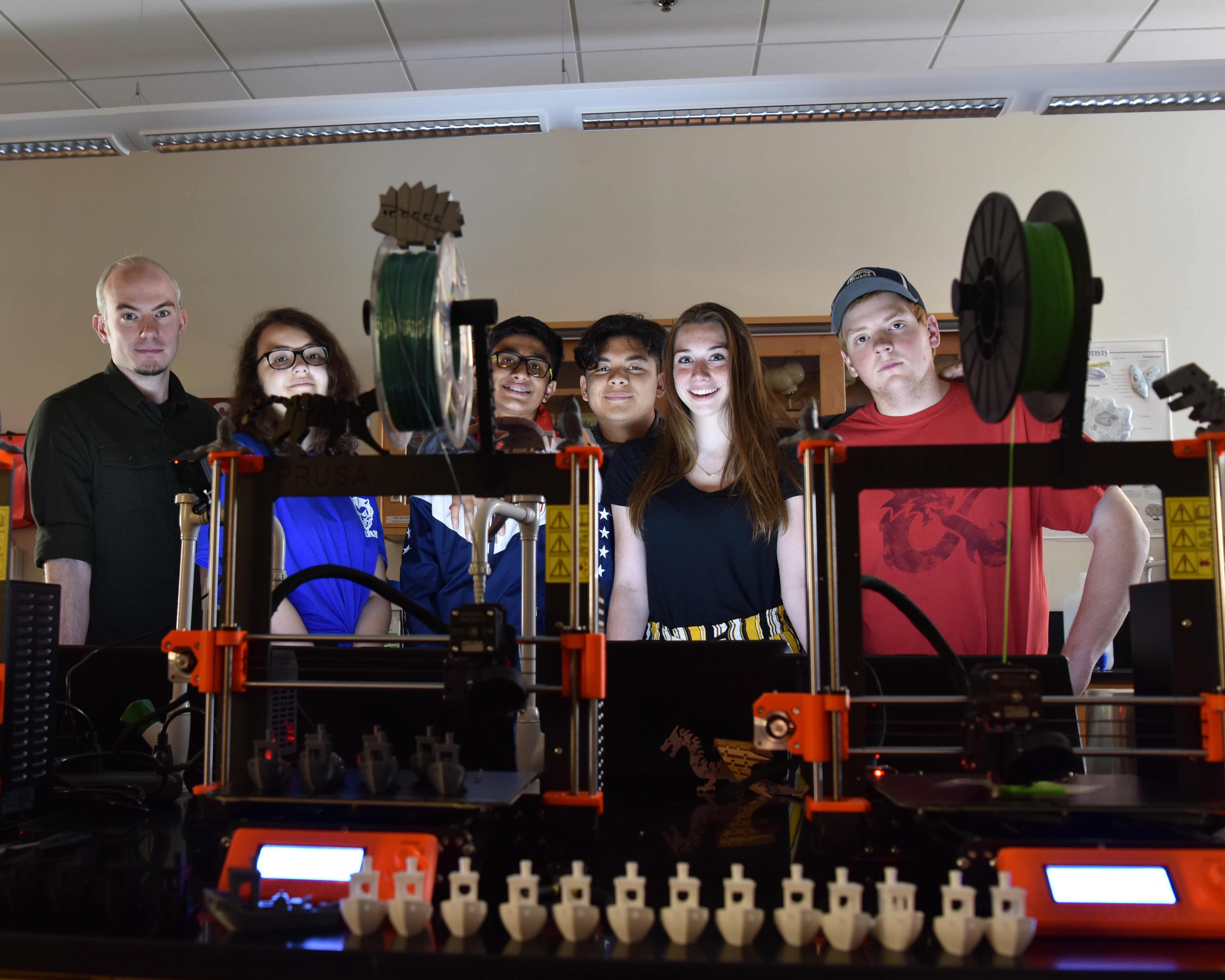
This course is designed to introduce students to design thinking and modern prototyping and manufacturing technologies. Topics covered range from Computer-Aided Design and Design for Manufacturing though comparisons of traditional manufacturing methods and various emerging technologies. A focus is placed on students gaining experience in 3D design and hands-on time with the two most prevalent 3D printing technologies (Fused Deposition Modeling and Stereolithography) with emphasis on advanced engineering and cosmetic applications including post-processing of prints. Expanding beyond merely using these technologies, the course also includes discussion on Design for the Environment including introducing the concepts of Life Cycle Analysis and Circular Economies
Middle School Student Projects
Raspberry Pi
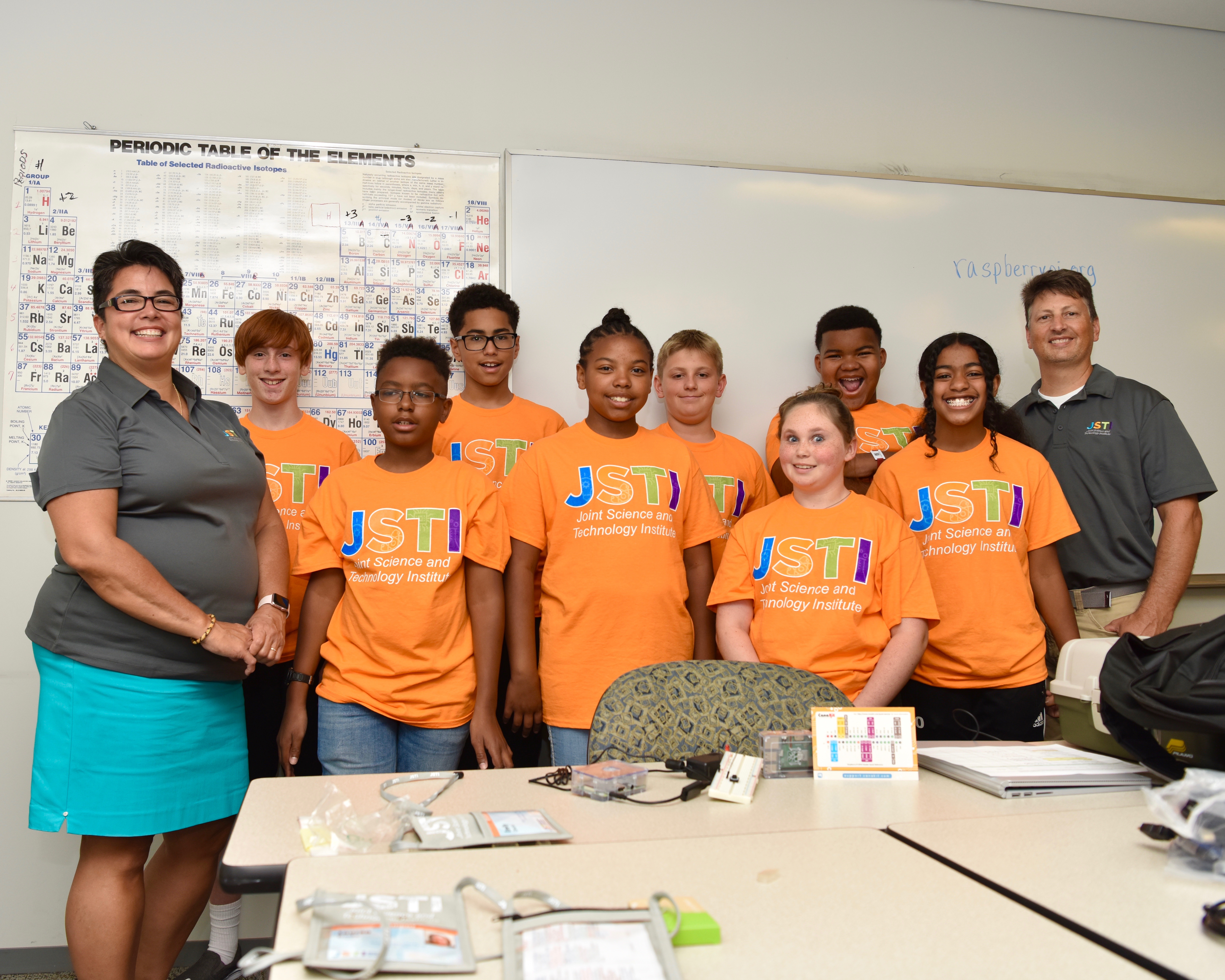
The Raspberry Pi is a low cost, credit-card sized computer that enables people of all ages to explore computing, and to learn how to program in languages like Scratch and Python. In this course, students will connect a Raspberry Pi to a monitor, a standard keyboard, and mouse, to discover that it is capable of doing everything you would expect a desktop computer to do, from browsing the internet and playing high-definition video, to making spreadsheets, word-processing, and playing games. The students will use a breadboard, wiring, resistors, and LEDs to learn basic coding and electronic circuity. They will use sensors and HATS with the Raspberry Pi to learn its capabilities with interacting with the outside world. We will create two digital maker projects: a smart mirror and a photo booth for use and display at the final presentation.
The Technology and Engineering of Drones
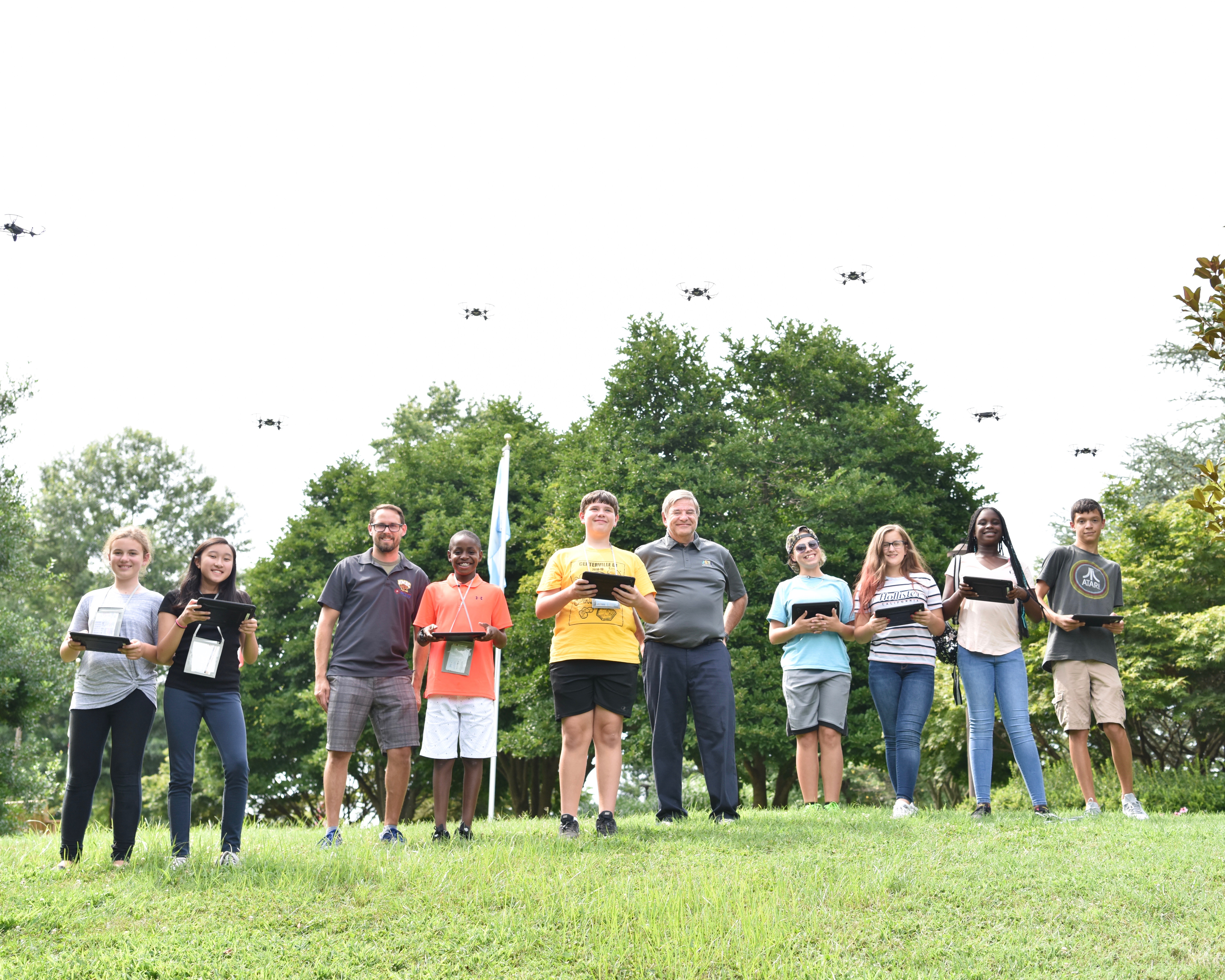
Students will research the evolution of drones, challenges in production, aerodynamic considerations, and safety. Additional focus will be on past, current, and future uses. Students will be ask to come up with a specific application that interests them (perhaps specific to their hometown) and report on how it could be implemented. Students will also have the opportunity to pilot and program their own drones. A field trip will include a visit to the campus of the University of Maryland - College Park.
Forensic Chemistry
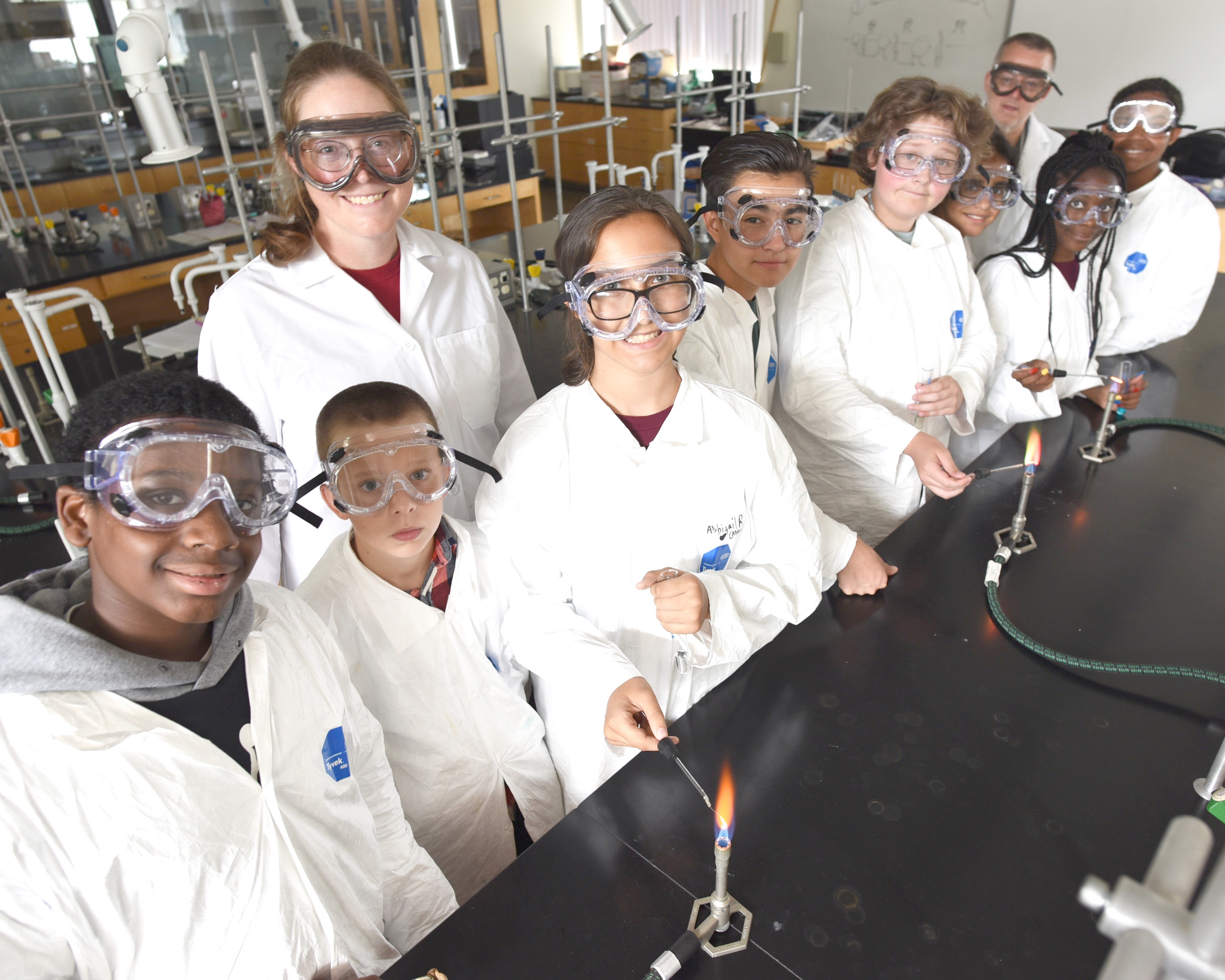
In qualitative analysis (an aspect of forensic chemistry) one determines what substances are present in a given material. Spectral analysis furnishes the best general system for detection of a substance. However, the necessary instruments for applying the principals of spectral analysis throughout the complete spectrum are quite expensive and frequently complicated. In this course, we will limit the application of spectral analysis to the visible portion of the spectrum. Using known properties of solubility and reactiveness as well as visual spectra, students will analyze unknowns and determine the presence or absence of particular ions. Students will learn to use an array of laboratory equipment, techniques, and observational skills.
3D Printing
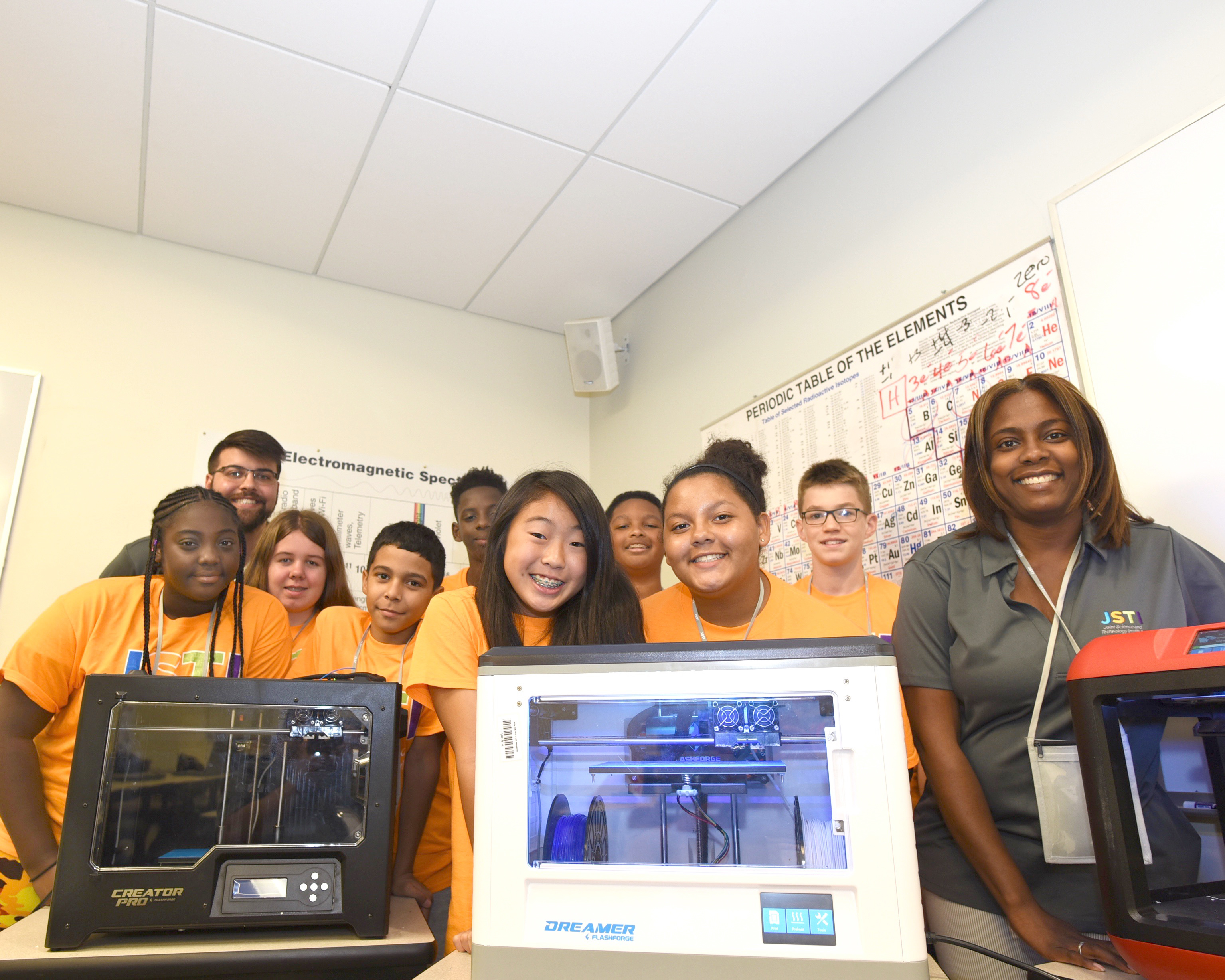
3D printing is an additive manufacturing process whereby objects are built up from plastic filament, liquid resin, layers of powder, or bio-compatible and edible materials. Desktop 3D printing is today’s printing press, putting rapid prototyping, customizable products, and individualized medical appliances in reach of the general public. Literacy in basic 3D modeling and manufacturing is an essential skill for future STEM success in this country. Students will learn how to be “makers” by using 3D modeling software and printing actual physical objects that they have designed and modeled themselves.
Teacher Projects
Rapid Prototyping and Military Packaging
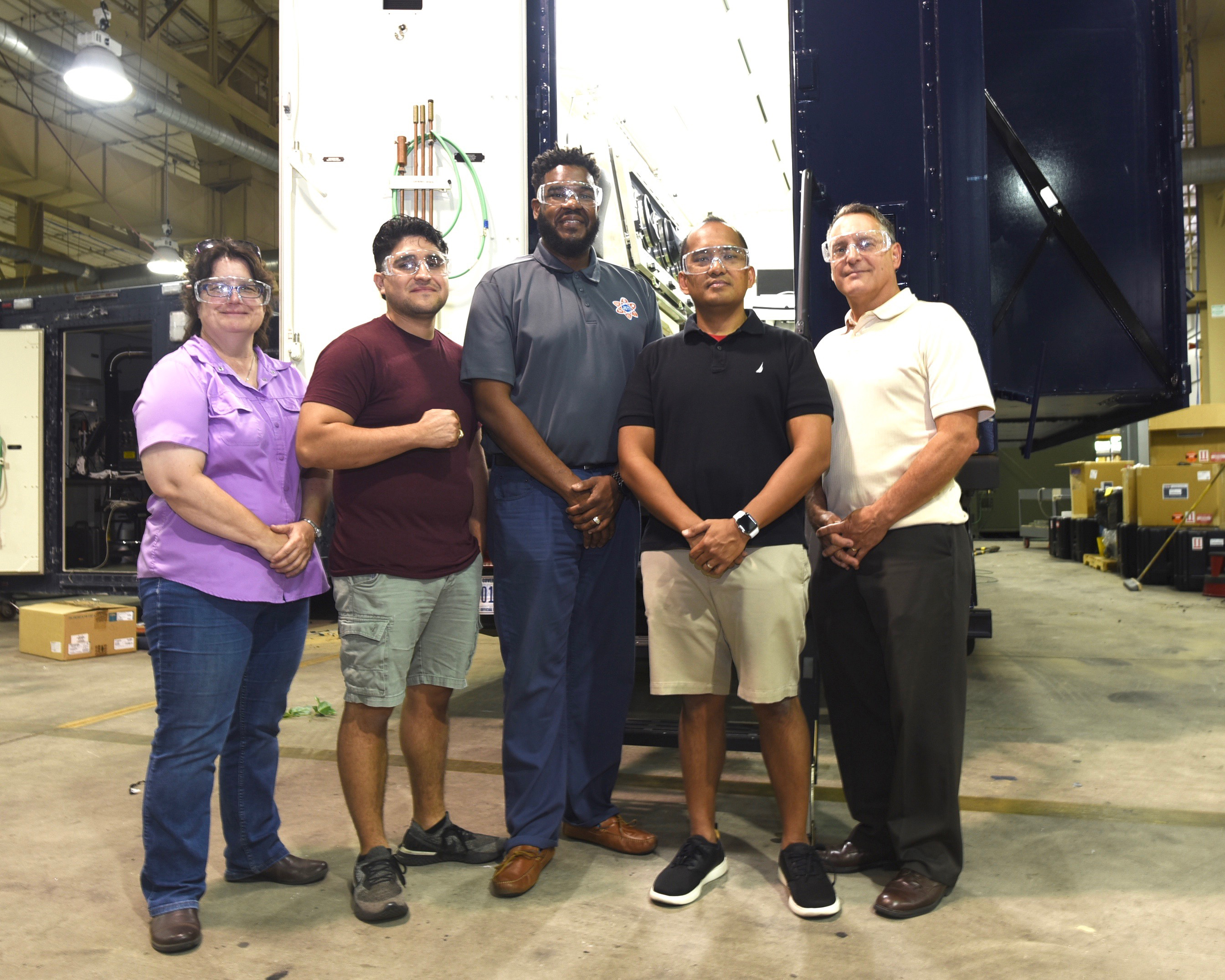
The teachers will design, build and test unique items and their packaging against the rugged military environment. Working with engineers and specialists from Advance Design & Manufacturing, the teachers will use SolidWorks, 3D printing, and other rapid prototyping technologies to analyze, model and build Widgets. The teachers will select from military specification packaging materials to protect the Widgets, and test both prototypes and packaging against the extreme conditions encountered by military material. This project will provide the teacher with an interdisciplinary approach to mathematics, engineering, and material sciences.
Assessment of Novel Anticonvulsants in a Rat Model of Nerve Agent-Induced Seizures
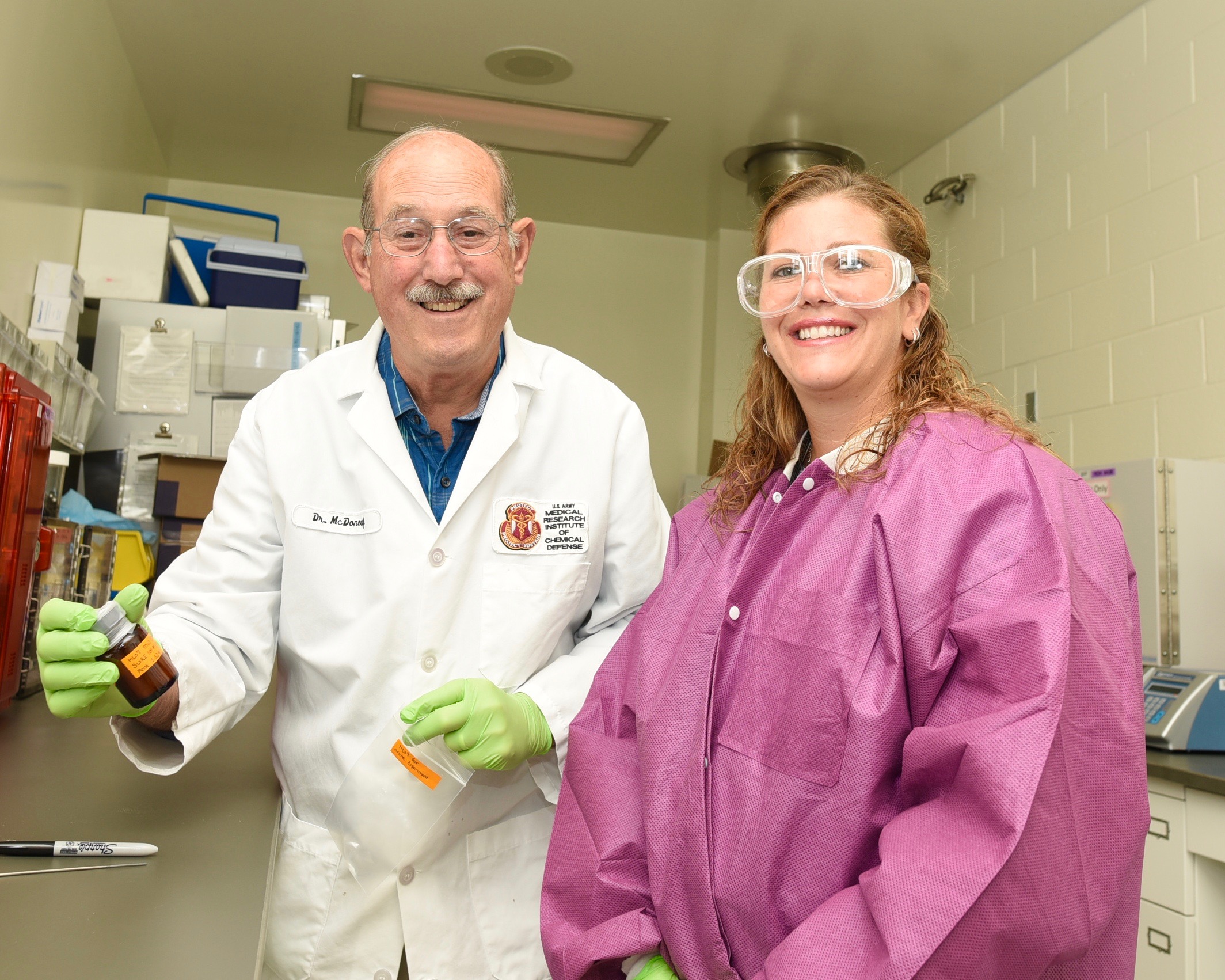
Teacher will learn about the toxic effects of nerve agents on brain function, specifically prolonged seizures that can cause brain damage. They will participate in all phases of an NIH-funded study to evaluate novel anticonvulsant compounds in a rat model of nerve agent intoxication. They will see how the animals are surgically prepared with electrodes to record brain electroencephalographic (EEG) activity. They will watch how animals react to nerve agent intoxication and develop prolonged EEG seizure activity and how they react to the novel test anticonvulsant. They will see how the EEG record is evaluated and the steps necessary to evaluate brain pathology.
Mass Spectrometry for the Warfighter
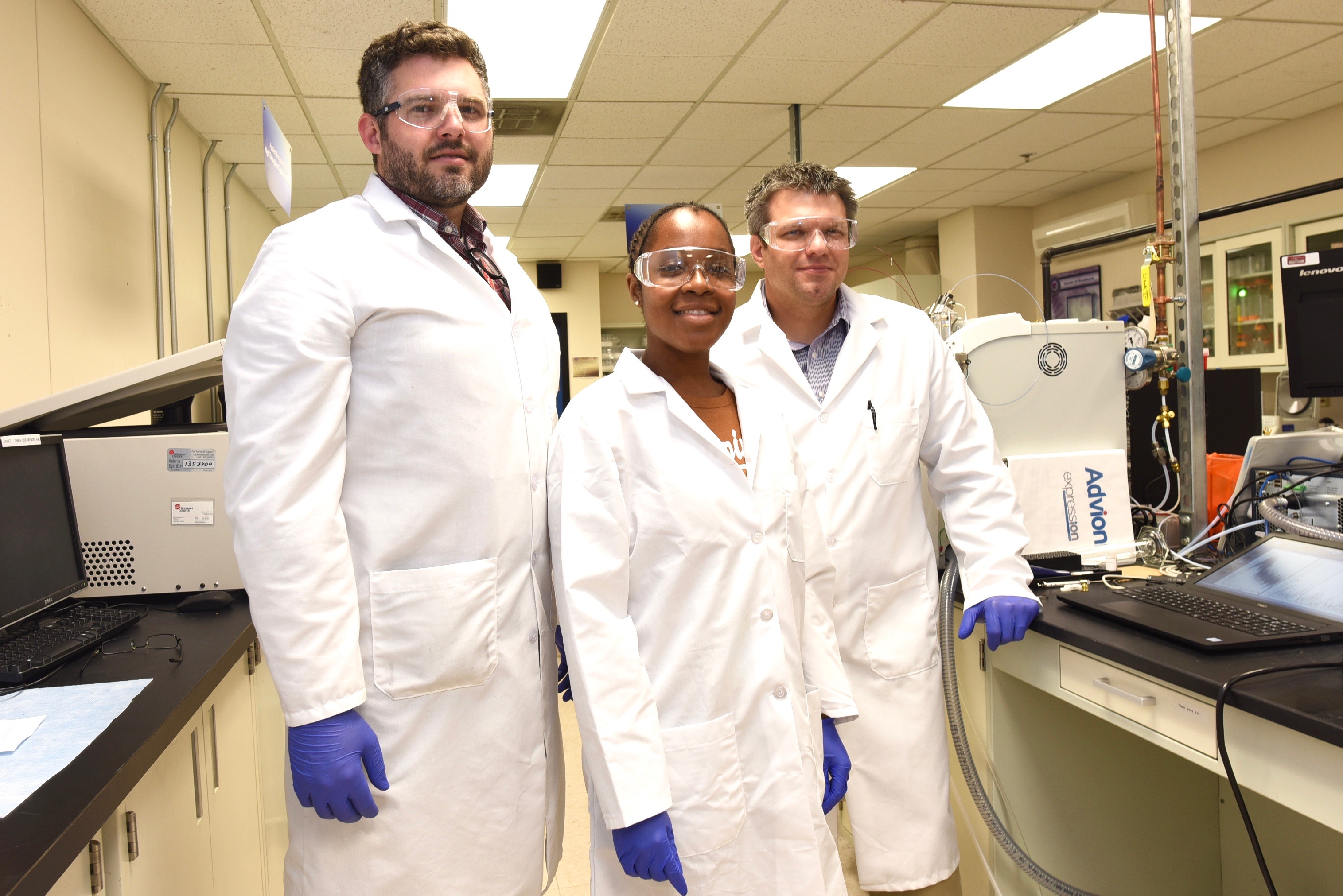
The BioScience Mass Spectrometry facility at the U.S Army CCDC Chemical Biological Center focuses on utilizing mass spectrometers for forensic purposes, in addition to applying mass analysis techniques to better understand complex living systems, utilizing both proteomics and metabolomics. The incumbent will have an opportunity to gain hands-on experience working with mass spectrometers primarily for our forensic-focused program. For this program we are working to apply a new sample prep-free ionization technique, known as paper spray ionization, to quickly analyze samples for the presence of various chemistries of military interest. It is our hope that this experience in the lab will help demonstrate that the U.S. Army is a multifaceted organization which embraces science and technology to support the warfighter.
A Further Characterization of Dimethyl Trisulfide (DMTS), a Novel Cyanide Medical Countermeasure
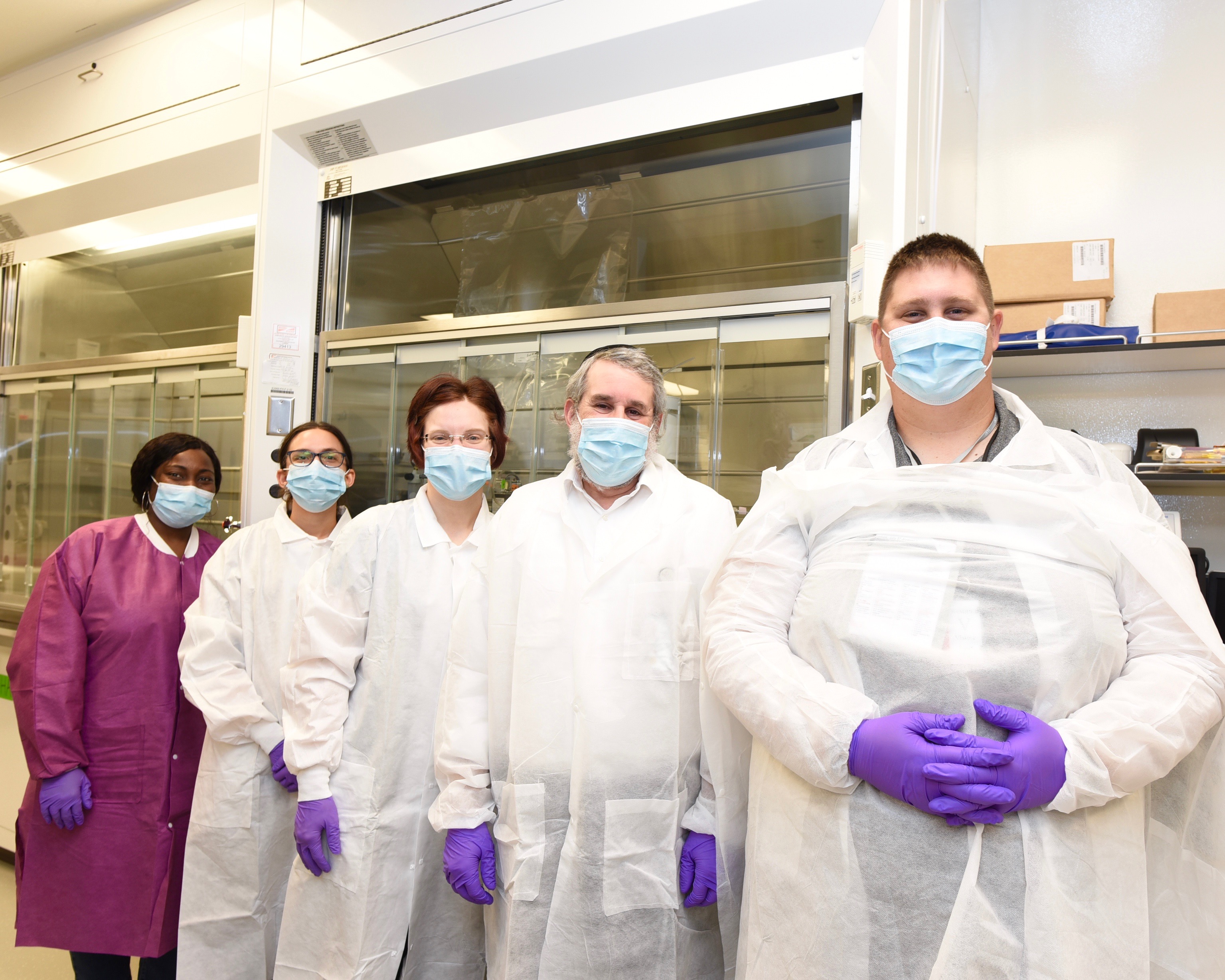
Current FDA-approved cyanide medical countermeasures require intravenous administration. Although these countermeasures are effective, they are designed for use in a hospital setting, where trained personnel prepare and place the intravenous lines. However, in the event of multiple cyanide poisonings, the intravenous route will likely not be feasible due to time and logistical constraints. Therefore, in the laboratory at USAMedical Research Institute for Chemical Defense, we are developing DMTS as an improved cyanide medical countermeasure that is administered by intramuscular (IM) injection. This summer, we will be further characterizing DMTS effectiveness using established rodent models of cyanide poisoning.
From Histology to Ultrastructural Pathology. An Overview
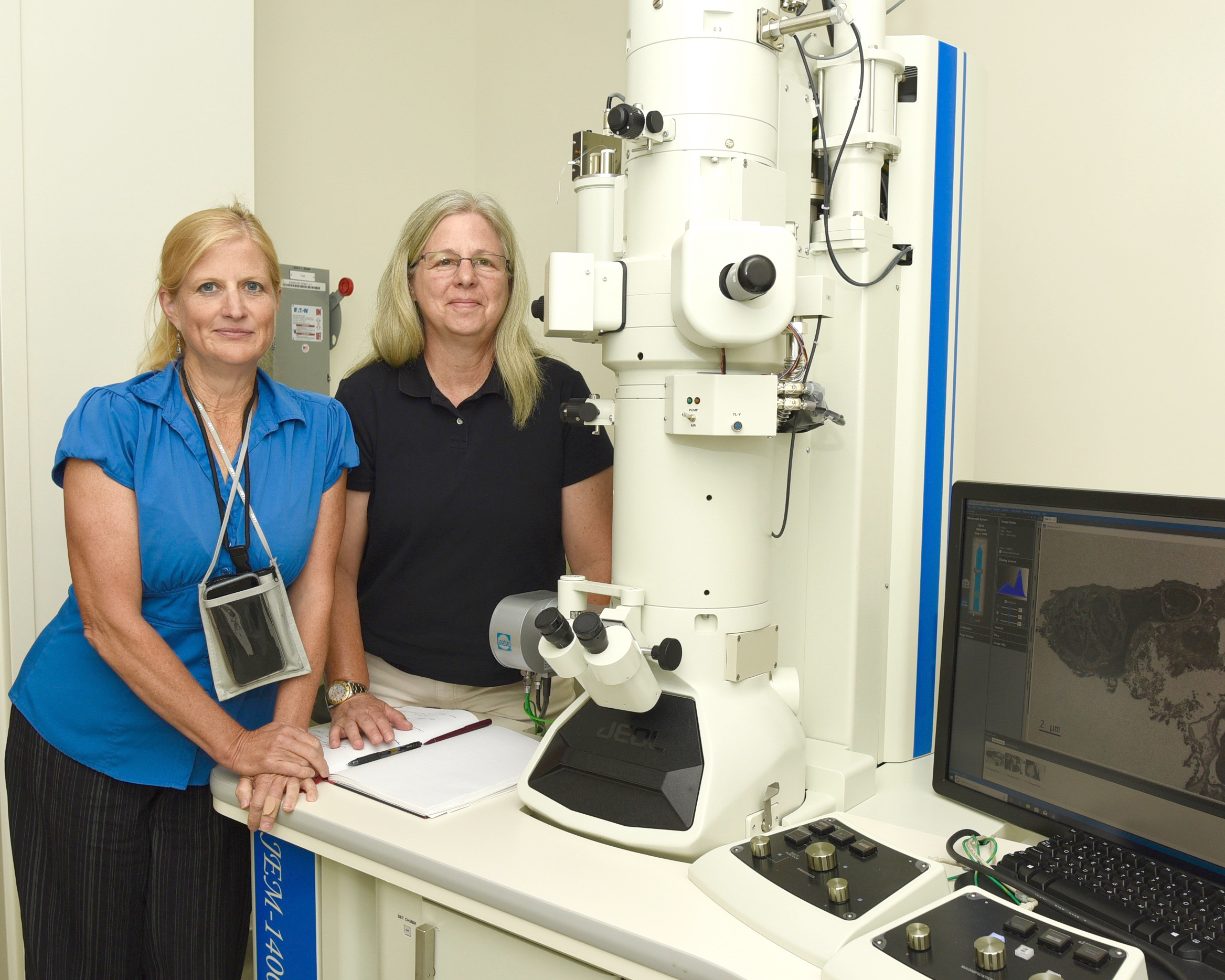
The participant will have the opportunity to both observe and gain hands-on experience with tissue sample processing, sectioning, and staining in preparation for sample analysis by bright field and transmission electron microscopy. In addition, they will learn the basics of electron optics and image formation and detection as well as be trained in the basic procedures necessary to acquire digital images using a transmission electron microscope.
Development of a Liquid Chromatography-Based Method for the Detection and Quantification of Dimethyl Trisulfide in Rat Blood
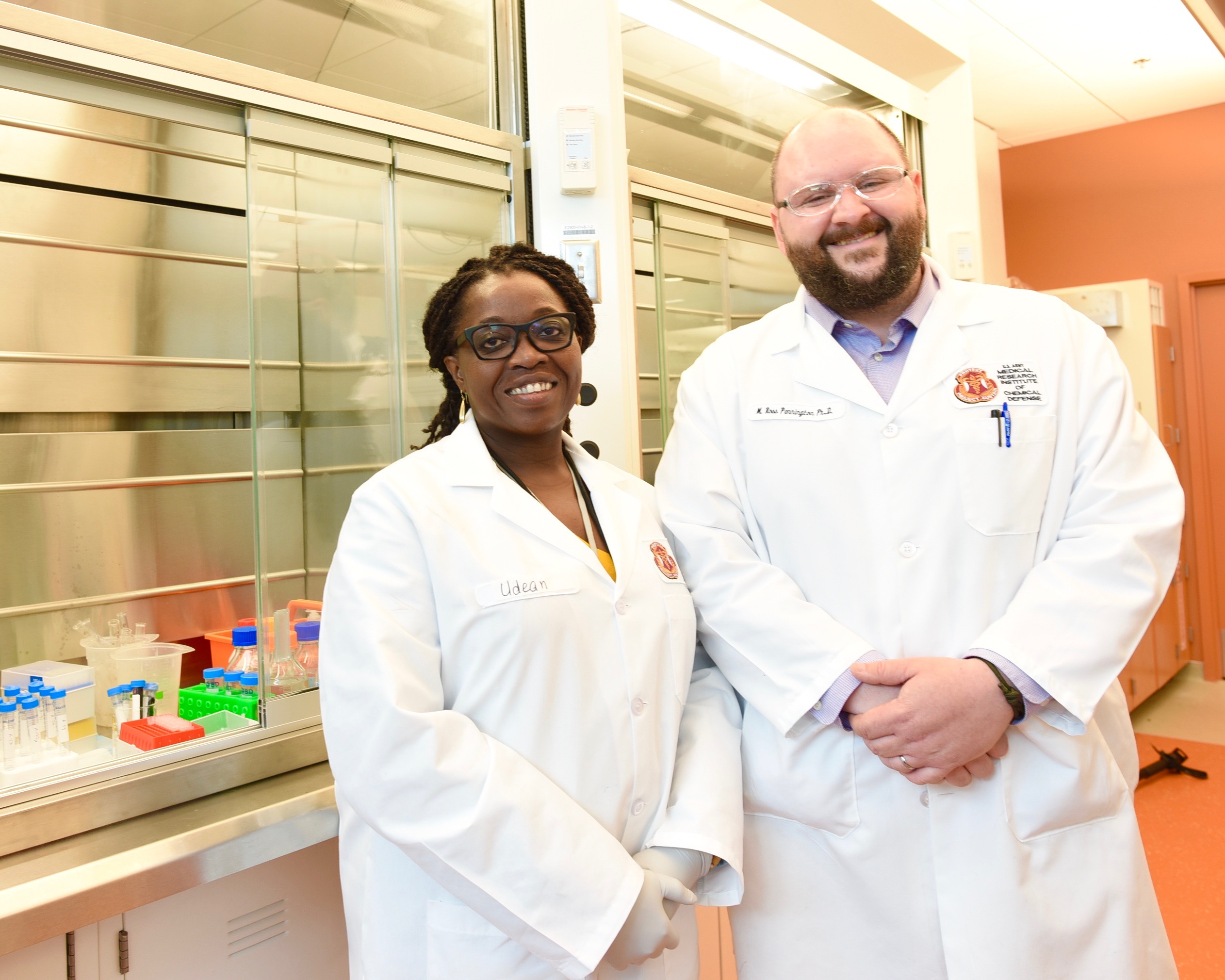
Dimethyl Trisulfide (DMTS) is a next generation countermeasure being developed as an antidote for the exposure to cyanide. Current methods utilize gas-chromatography based systems that are time-consuming and have low sensitivity. This work seeks to develop a higher throughput and more sensitive method for the detection/quantification of DMTS in rat whole blood utilizing liquid chromatography coupled to tandem mass spectrometry (LC-MS/MS).
Modeling of Molecular Transport through Material with Pores and Voids
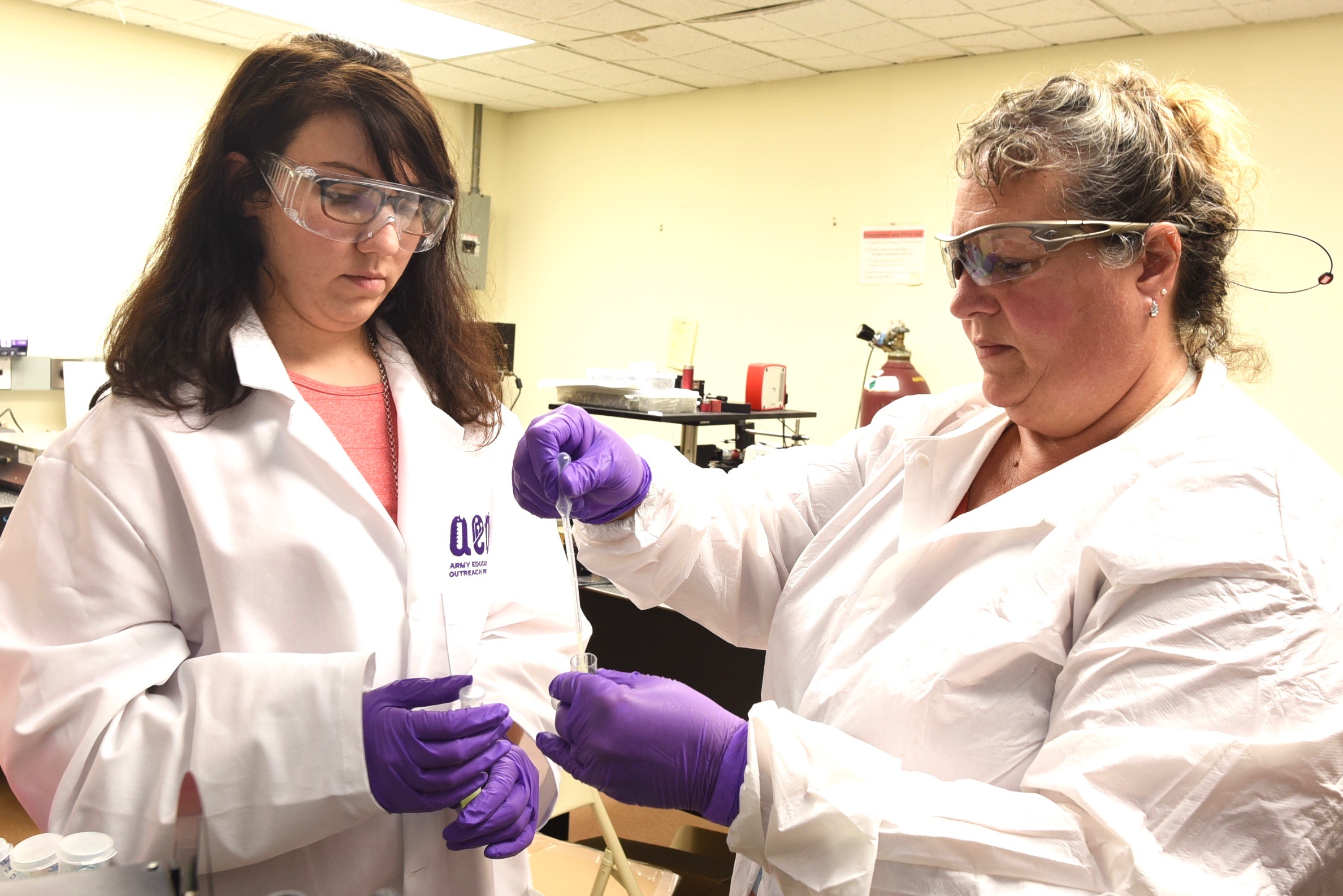
Logistics, that is the movement of material necessary for support and maintenance of military forces, imposes a significant burden on the Department of Defense. 3D printing offers a significant relief of the logistics burden in that it can manufacture almost any given replacement part at the point of need. Potentially, 3D printing removes the need to transport large inventories of parts to operational areas. A significant barrier to realizing full use of 3D printing is that the effect of porosity and voids that are inherent in 3D printed parts. For Chemical and Biological Defense, it is important to understand how agent material might diffuse through a 3D printed part. Our team is currently engaged in a program to understand the mechanism for transport through media that has voids and pores, and this is a dual modeling and experimental effort. While many fundamental processes can be inferred from the results of experiments, models that have been validated with experiment one way or another provide molecular level insight that cannot be obtained experimentally. Thus, the combination of modeling and experiment can provide a detailed understanding of a chemical phenomenon. For the two week period, we wish to demonstrate to the JSTI teacher some of the fundamentals of computational modeling and its operational relevance to real world DoD problems. In tandem, we hope to demonstrate modeling tools that the JSTI participant can take back to their school.
